Guided tours of the Garden grounds, greenhouses, herbarium and library will be available on Wednesday (Aug. 23), Thursday (Aug. 24) and Friday (Aug. 25). Tours will be guided by educators and/or experts in each area.
Tour capacity is limited to 10 people due to space constrains in most areas, therefore a first-come sign-up system will be in place on the first day of the conference (Wednesday, August 23) to better manage crowd access.
Several identical tours per area will be available at different times, including coffee breaks (morning and afternoon) and lunchtime, to accommodate for high demand.
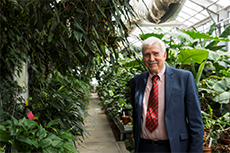 1. Araceae Research Living Collection: The current aroid living research collection is mostly the effort of Dr. Croat, who has travelled extensively studying and collecting specimens of the family Araceae. Current holdings (as of March 2021) include ca. 3,000 individual plants and 1,976 unique accessions, representing 59 Araceae genera and >600 different species. Most of the accessions were originally collected in the wild (ca. 1,400), but some 400 collections are of cultivated origin, and yet others are of unknown origin. The bulk of the aroid living collections is spread throughout three of the research greenhouses, occupying 3,450 square feet.
1. Araceae Research Living Collection: The current aroid living research collection is mostly the effort of Dr. Croat, who has travelled extensively studying and collecting specimens of the family Araceae. Current holdings (as of March 2021) include ca. 3,000 individual plants and 1,976 unique accessions, representing 59 Araceae genera and >600 different species. Most of the accessions were originally collected in the wild (ca. 1,400), but some 400 collections are of cultivated origin, and yet others are of unknown origin. The bulk of the aroid living collections is spread throughout three of the research greenhouses, occupying 3,450 square feet.
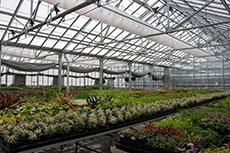 2. MBG Greenhouse production complex: A part of Garden that the public rarely sees is the greenhouse complex, which includes a whole acre under glass. A series of 18 greenhouses are connected to a large central hallway called the Head House. This complex accommodates plant propagation, plant production for indoor and outdoor use, research plants and special collections such as orchids, cacti and succulents, tropical plants and aquatics.
2. MBG Greenhouse production complex: A part of Garden that the public rarely sees is the greenhouse complex, which includes a whole acre under glass. A series of 18 greenhouses are connected to a large central hallway called the Head House. This complex accommodates plant propagation, plant production for indoor and outdoor use, research plants and special collections such as orchids, cacti and succulents, tropical plants and aquatics.
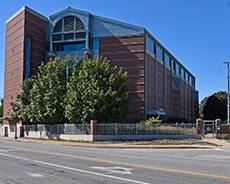 3. Herbarium: The Missouri Botanical Garden’s Herbarium is one of the world’s outstanding research resources for specimens and information on bryophytes and vascular plants. As of 2021 the collection has nearly 7.5 million specimens. The MO herbarium is divided between two buildings, and tours would be available for the collections at Bayer Center.
3. Herbarium: The Missouri Botanical Garden’s Herbarium is one of the world’s outstanding research resources for specimens and information on bryophytes and vascular plants. As of 2021 the collection has nearly 7.5 million specimens. The MO herbarium is divided between two buildings, and tours would be available for the collections at Bayer Center.
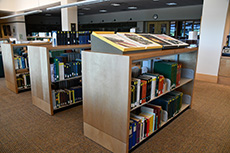 4. Peter H. Raven Library – Rare Book collection: The Library includes more than 250,000 items, containing collections of books, periodicals, botanical artwork, field books, photographs, as well as modern and historical maps. The Library's collections of modern to centuries-old botanical literature are essential for scientists who name and describe plants as well as for the study of edible and medicinal plants, the art of botanical illustration, and the history of scientific exploration. The special Rare Book collection contains over 6,500 volumes dating back as far as the 15th century. Among the most prized are the first edition, first printing of Charles Darwin's On the Origin of Species.
4. Peter H. Raven Library – Rare Book collection: The Library includes more than 250,000 items, containing collections of books, periodicals, botanical artwork, field books, photographs, as well as modern and historical maps. The Library's collections of modern to centuries-old botanical literature are essential for scientists who name and describe plants as well as for the study of edible and medicinal plants, the art of botanical illustration, and the history of scientific exploration. The special Rare Book collection contains over 6,500 volumes dating back as far as the 15th century. Among the most prized are the first edition, first printing of Charles Darwin's On the Origin of Species.
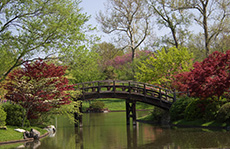 5. Garden grounds: Explore the Garden's history, plants, and seasonal highlights with a Garden Docent through a personalized walking tour. The Garden is always beautiful, no matter the season. Discover the diversity of plants, get a glimpse of St. Louis history and explore gardens that reflect a variety of cultures, styles and traditions. In this tour, your group will explore what’s truly in bloom around the Garden and in its Living Collection.
5. Garden grounds: Explore the Garden's history, plants, and seasonal highlights with a Garden Docent through a personalized walking tour. The Garden is always beautiful, no matter the season. Discover the diversity of plants, get a glimpse of St. Louis history and explore gardens that reflect a variety of cultures, styles and traditions. In this tour, your group will explore what’s truly in bloom around the Garden and in its Living Collection.
NOTE: Scientific use of the collections in the Garden’s herbarium, DNA Bank, library and aroid greenhouses before, during and after the conference should be arranged in advance by contacting the organizing committee at xivaroidconference@mobot.org